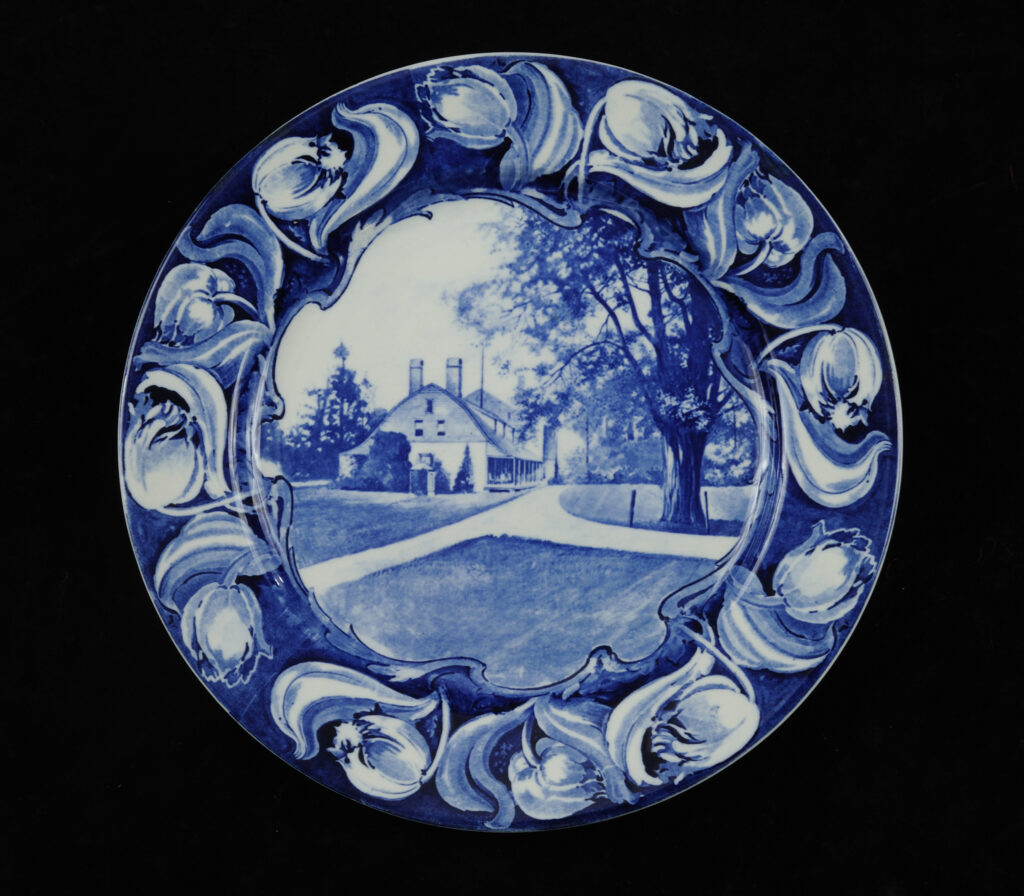The history and iconography of the Society of the Cincinnati have been featured on ceramics since the organization was founded. One of the most recognizable Chinese export porcelain patterns of the eighteenth century is George Washington’s Society of the Cincinnati service, made ca. 1784-1785. The pieces in this large dinner and tea service depict the Eagle insignia of the Society held by the allegorical figure Fame, surrounded by the fashionable blue Fitzhugh border. The Society’s collections include four pieces from Washington’s iconic service. This porcelain service was commissioned by Samuel Shaw, an original member of the Society and a prominent figure in the United States’ early trade with China. Washington learned of the set shortly after it arrived in America in 1785 and finalized its purchase the following year. This first Society service inspired Shaw and other original members to commission additional Chinese export porcelain pieces featuring the Eagle insignia and other symbols. These early ceramics reflect the Society’s purpose to celebrate and preserve the memory of the achievement of American independence.
Since the founding era, artisans have produced ceramics to commemorate anniversaries of the Society’s founding, its Triennial Meetings, and other important events and places in the history of the organization and its branches. These pieces were primarily made in Europe and the United States in the nineteenth and early twentieth centuries. The Society’s collections preserve examples of these ceramics, documenting the moments and events earlier generations chose to commemorate.
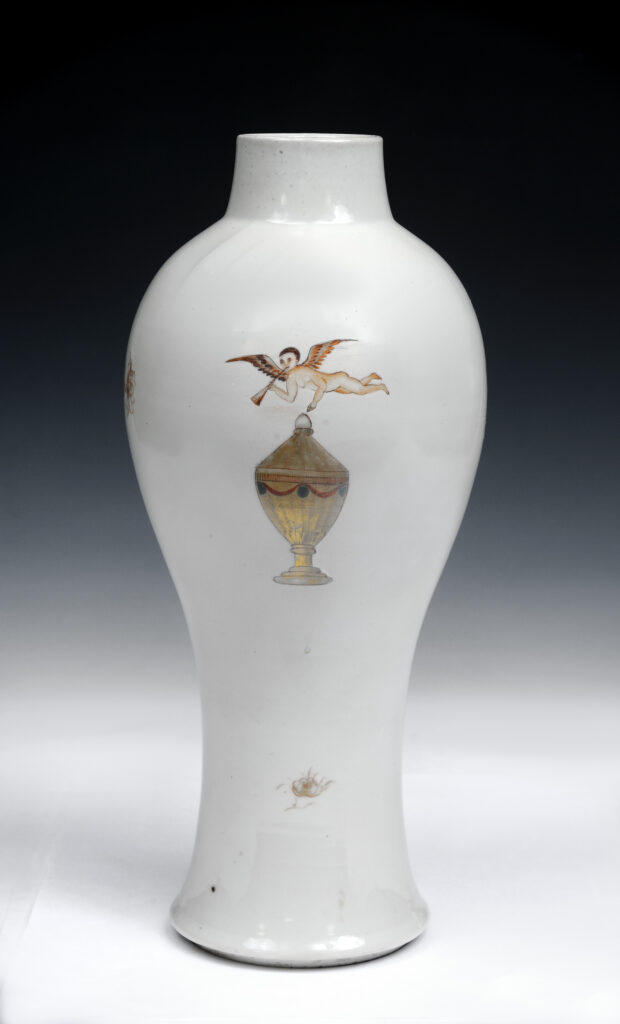
Chinese
ca. 1770-1810
Gift of Andrew Parker, Jr., 1973
This baluster-shaped porcelain vase bears an image of the allegorical figure Fame holding a trumpet and gesturing towards an urn. Fame has been an important part of the Society of the Cincinnati’s iconography since its founding, when the Institution specified that the reverse of the insignia depict Fame crowning Cincinnatus.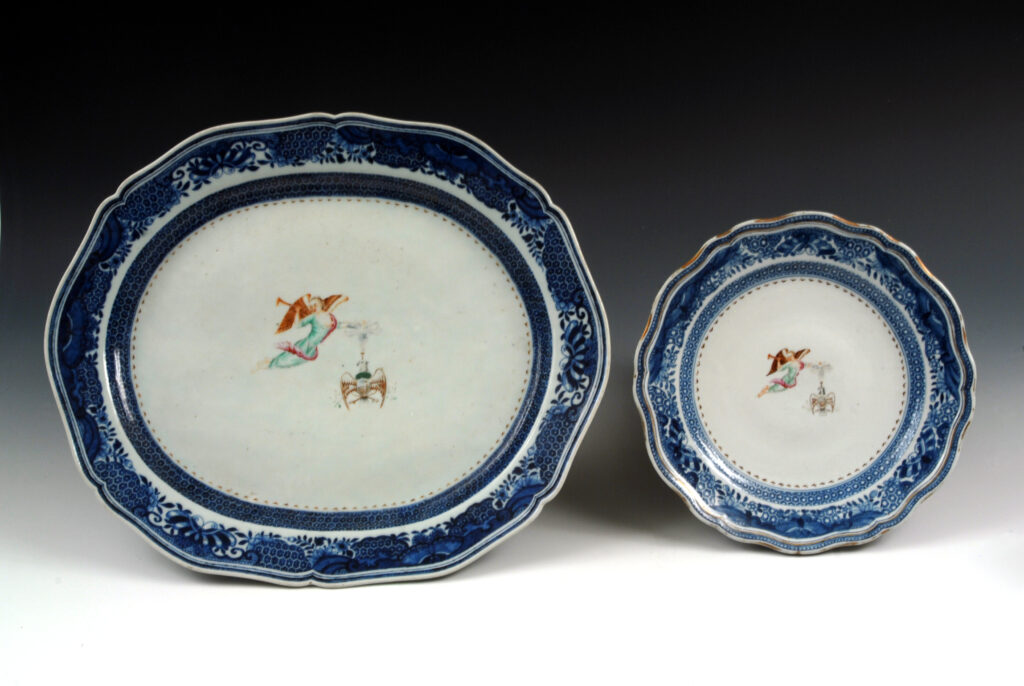
Jingdezhen, China
ca. 1784-1785
Gift of Mrs. A. D. Pollock Gilmour and Miss Lilias Janney, 1963
The most famous Society porcelain service features a blue Fitzhugh border and was purchased by George Washington in 1786. The Society’s collections include four pieces from Washington’s 302-piece dinner and tea service: a platter and three dinner plates.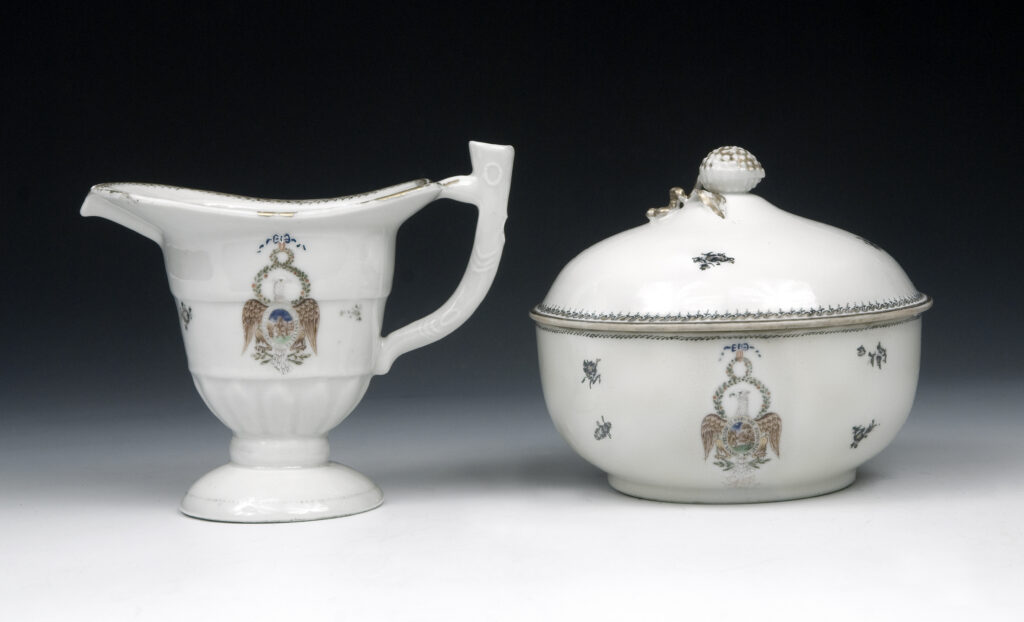
Jingdezhen, China
ca. 1790
Museum Acquisitions Fund purchases, 2008 and 2010
Samuel Shaw, an original member of the Massachusetts Society of the Cincinnati and a merchant in the China trade, commissioned the Society porcelain services made in the late eighteenth century, including several tea services he gave to fellow Massachusetts Society members. Shaw’s own Society tea service—which was larger than the others he ordered for his fellow members—included these two pieces.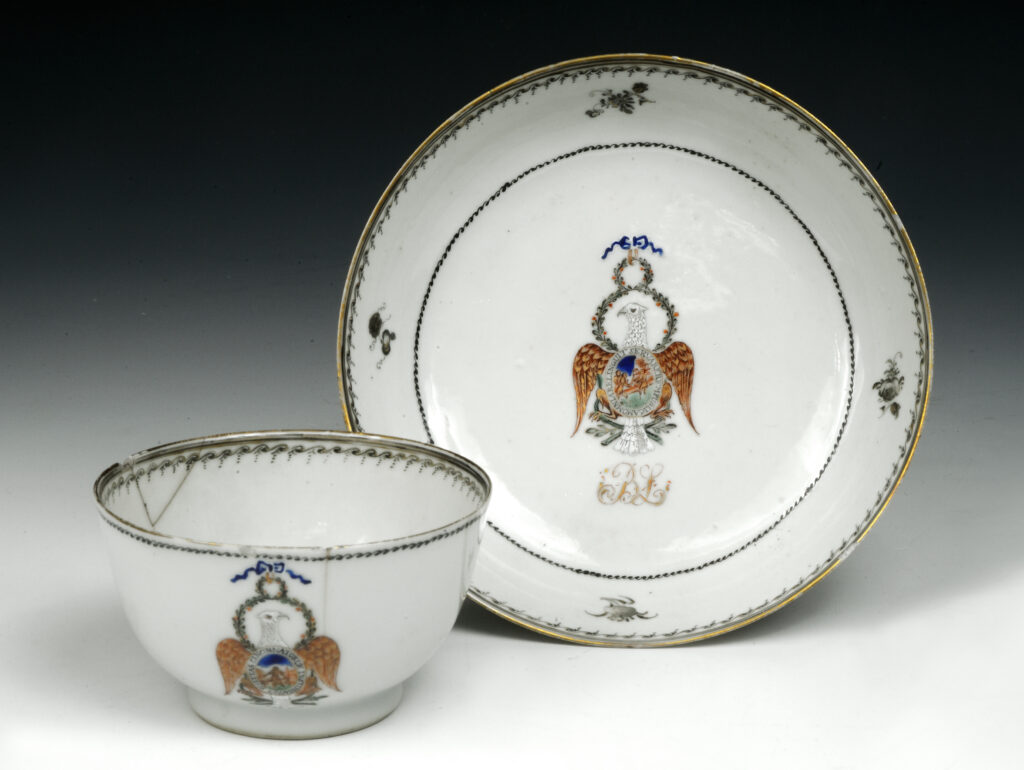
Jingdezhen, China
ca. 1790
Bequest of Margaret Warren in memory of Winslow Warren, 1960
This teacup and saucer were part of the Society of the Cincinnati tea service owned by Benjamin Lincoln, a major general of the Continental Army during the Revolution and the first president of the Massachusetts Society of the Cincinnati. Both pieces bear his cipher, “BL.”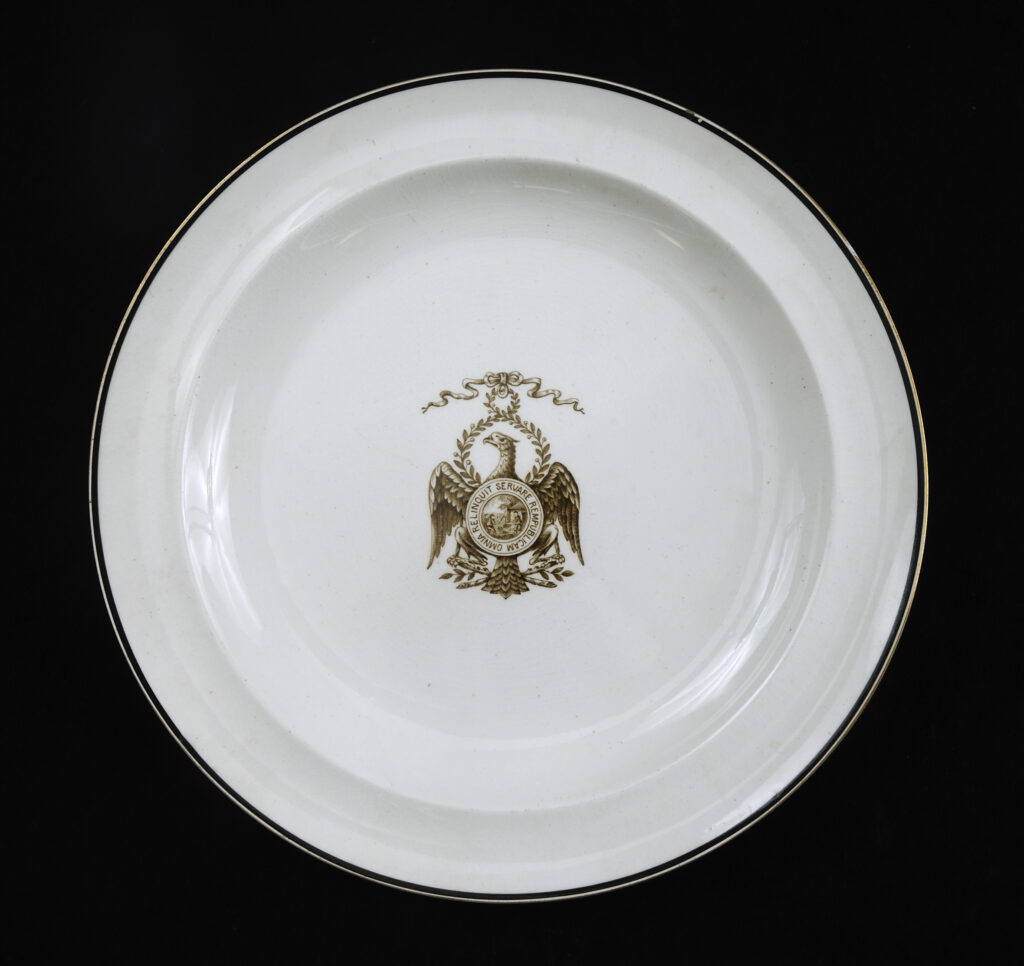
Wedgwood, England
ca. 1880
Gift of Winslow Warren, Massachusetts Society of the Cincinnati, 1960
In the early 1880s, the Massachusetts Society of the Cincinnati commissioned this simple dinner plate pattern to commemorative the centennial of the Society’s founding.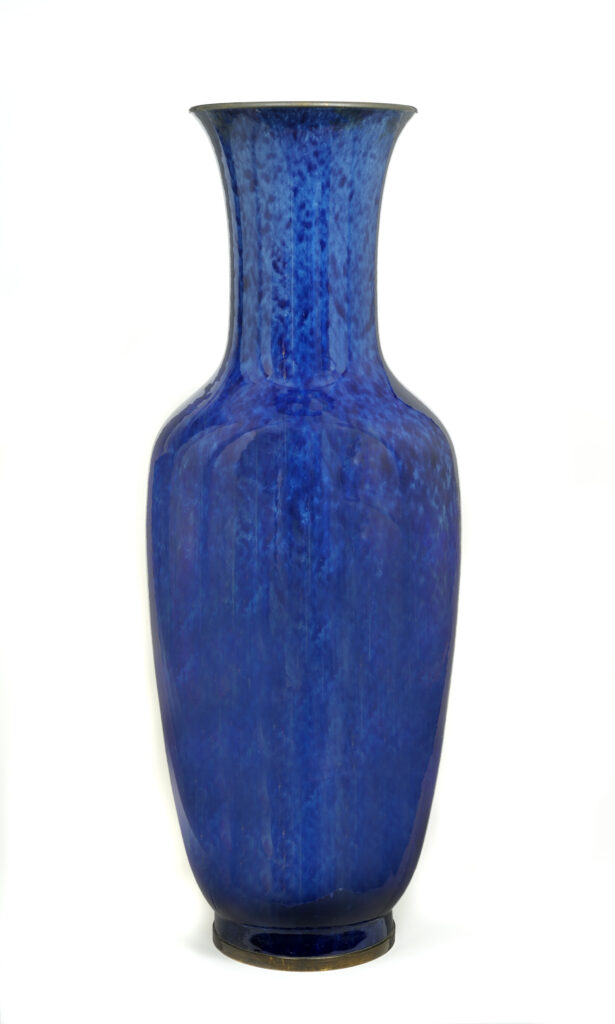
Sèvres Porcelain Factory, France
ca. 1903
Gift of the government of France, 1903
Standing over four feet tall, this monumental porcelain vase was commissioned by the president of France and presented to the Society of the Cincinnati in 1903 in recognition of the courtesies extended by the Society to the French mission to the United States when the statue of General Rochambeau was unveiled in Lafayette Park in Washington, D.C., in 1902.